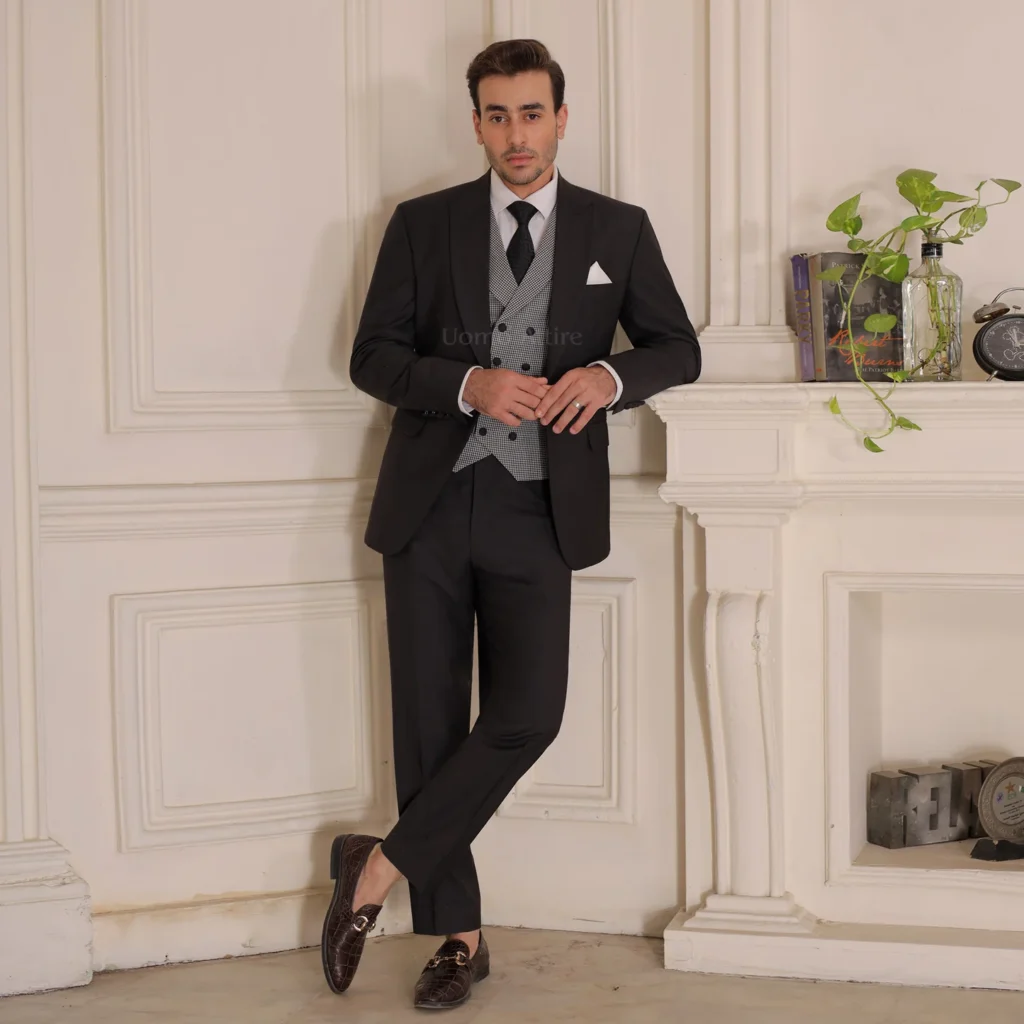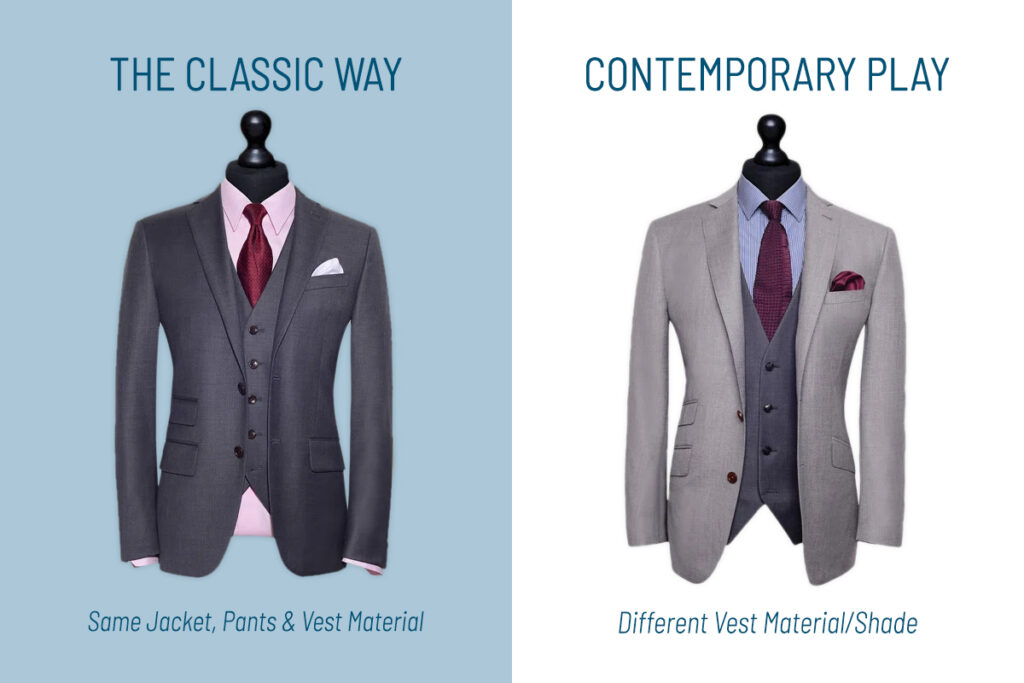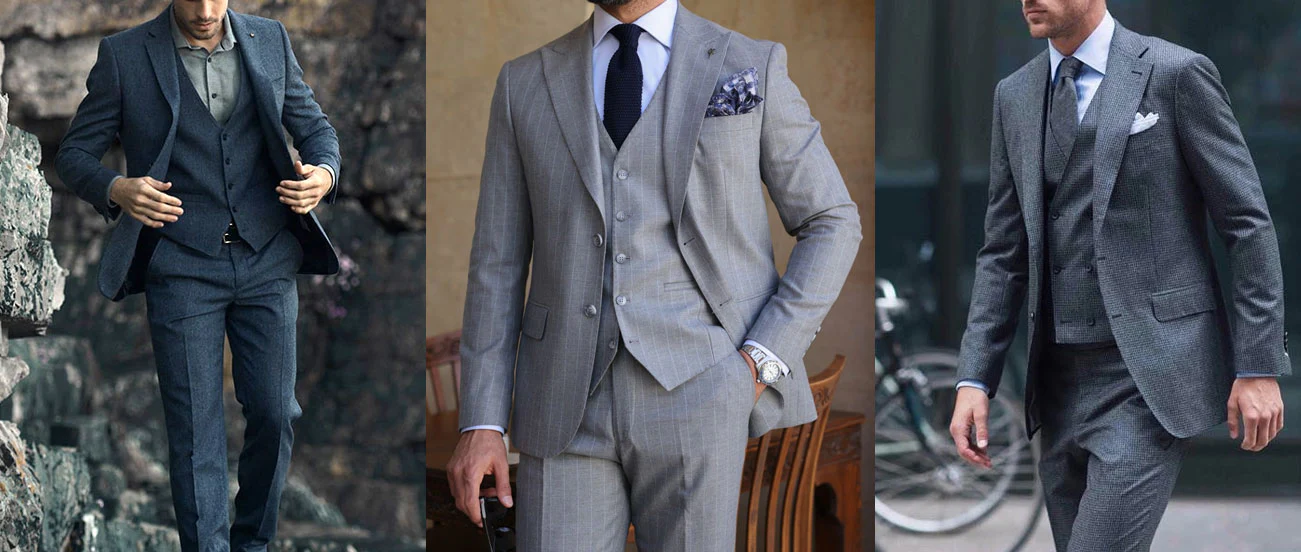The Complete Guide to Three-Piece Suits

In a world where casual wear dominates boardrooms, weddings, and even once-formal gatherings, the three-piece suit continues to hold a place of distinction. Defined by its jacket, waistcoat (vest), and trousers cut from the same fabric, this classic ensemble is more than just clothing — it’s a statement of confidence, elegance, and tradition.
Unlike temporary fashion trends, the three-piece suit can be used in any time period, culture, or event. From its royal origins in the 17th century to today’s slim-fit versions on red carpets and in business meetings, the suit proves that good tailoring never goes out of style.
What Makes a Three-Piece Suit?
A real three-piece suit is made with three parts that work together:
The Jacket
- Can be single-breasted (versatile, modern) or double-breasted (formal, bold).
- Lapel choice (notch, peak, or shawl) sets the tone — peak lapels lean formal, while notched are everyday-appropriate.
The Waistcoat (Vest)
- The true differentiator. A classic six-button single-breasted vest is most common, leaving the bottom unbuttoned.
- Double-breasted vests are often worn at weddings and other traditional events, giving the outfit greater significance.
- Can be styled alone with trousers in warm weather for a refined yet breathable option.
The Trousers
- Should match the jacket and vest in fabric.
- Flat front for a modern, sleek look, or pleated front for ease and vintage appeal.
- Cuffs vs. no cuffs depends on personal style and height (cuffs can visually shorten the leg).
The Rich History of the Three-Piece Suit

The three-piece suit’s journey mirrors the evolution of men’s fashion:
- 1666 – The Birth: King Charles II of England introduced the waistcoat to distinguish English style from French extravagance.
- 18th & 19th Centuries: The Regency and Victorian eras cemented waistcoats as symbols of elegance. Think Beau Brummell’s dandyism and Victorian frock coats.
- Early 20th Century: Businessmen and politicians adopted the three-piece outfit as their standard for authority.
- 1920s–1930s: The “Golden Age” — tailored three-piece suits became everyday essentials, blending formality with modernity.
- Post-War Decline: Fabric rationing, mass production, and cultural casualization shifted preference toward two-piece suits.
- 1970s Revival: Disco culture reintroduced colorful three-piece suits with energetic fabrics and big lapels.
- Today: A niche but powerful choice — favored at weddings, in finance, and among fashion-conscious professionals.
Why Men Stopped Wearing Three-Piece Suits
The decline wasn’t about style alone — it reflected global shifts:
- Fabric Shortages: World Wars rationed wool and silk.
- Mass Production & Fast Fashion: Cheaper two-piece suits became accessible to everyone.
- Cultural Shifts: From the counterculture of the 1960s to Silicon Valley’s casual dress codes, formality fell out of favor.
- Workplace Evolution: Banking halls of suited men transformed into open-plan tech offices where jeans and hoodies reign.
Why the Three-Piece Suit Is Still Relevant
Despite these changes, the three-piece suit continues to thrive — here’s why:
Versatility
- Wear all three pieces for maximum impact.
- Remove the waistcoat for a standard two-piece look.
- Wear the vest alone in summer or for casual-smart styling.
Sophistication
- Instantly increases your presence in formal or semi-formal environments.
Occasion-Ready
- A popular choice for weddings, business meetings, black-tie affairs, and nighttime parties.
Confidence Factor
- Studies show well-dressed men are perceived as more competent and trustworthy.
How to Style a Three-Piece Suit in the Modern Era

- Choose the Right Fabric
- Wool: The most versatile and durable option.
- Linen: Ideal for summer weddings or beachside events.
- Tweed/Flannel: Great for fall and winter, offering texture and warmth.
- Pick the Perfect Fit
- Slim-fit cuts work well for modern silhouettes.
- Ensure the vest covers the shirt waistband — no shirt peeking between trousers and waistcoat.
- Accessorize Thoughtfully
- Pocket squares, cufflinks, and ties should complement, not overpower.
- Brown leather shoes pair beautifully with navy or grey suits, while black shoes go well with charcoal or black.
- Know the Occasion
- Weddings: Opt for lighter shades or textured fabrics (light grey, beige, or tweed).
- Business: Stick to navy, charcoal, or pinstripe for authority.
- Casual Elegance: Experiment with patterned waistcoats or bold color combinations.
- Seasonal Styling Hacks
- Summer: Swap wool for cotton-linen blends; ditch the jacket if needed.
- Winter: Layer with a wool overcoat — the waistcoat keeps the suit’s structure visible.
Pro Tips for Wearing a Three-Piece Suit Like a Gentleman
- Always leave the bottom waistcoat button undone.
- Match your belt and shoes for consistency.
- Avoid overly shiny fabrics unless you’re aiming for a 1970s throwback.
- Keep the suit pressed — creases ruin the polished look.
- Confidence is your best accessory; own the look.
Conclusion A Timeless Investment in Style
The three-piece suit isn’t about clinging to the past — it’s about embracing tradition while adapting it for the modern world. Whether you’re walking down the aisle, presenting in the boardroom, or attending a gala, a three-piece suit tells the world you value elegance, detail, and timeless style.
It’s not just clothing. It’s a personal brand statement.
Also Read: How to tell when vegetables are ready to harvest – 2025

